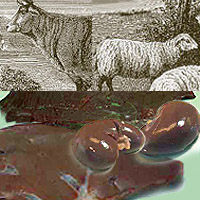Penn Herb Wellness Guide
Variety Meats

Varieties
Variety meats include beef, pork, lamb, and poultry liver, kidneys, sweetbreads (thymus gland), brains, heart, tongue, tripe, feet, and tail. Generally variety meats from young animals are milder and more tender than those from older animals.
Liver and heart are available frozen as well as fresh.
Tongue is available fresh, pickled, corned, and smoked.
Sweetbreads consist of two lobes—the throat lobe and the heart lobe. The heart lobe has a more delicate taste and texture.
Tripe, the lining of a cows’ stomach, comes in three kinds: honeycomb, pocket, and plain or smooth tripe. Honeycomb is considered the most tender.
Pigs feet, or trotters, are available fresh, pickled, and smoked.
Copyright 2025 TraceGains, Inc. All rights reserved.
Learn more about TraceGains, the company.
The information presented in the Food Guide is for informational purposes only and was created by a team of USregistered dietitians and food experts. Consult your doctor, practitioner, and/or pharmacist for any health problem and before using any supplements, making dietary changes, or before making any changes in prescribed medications. Information expires December 2025.


